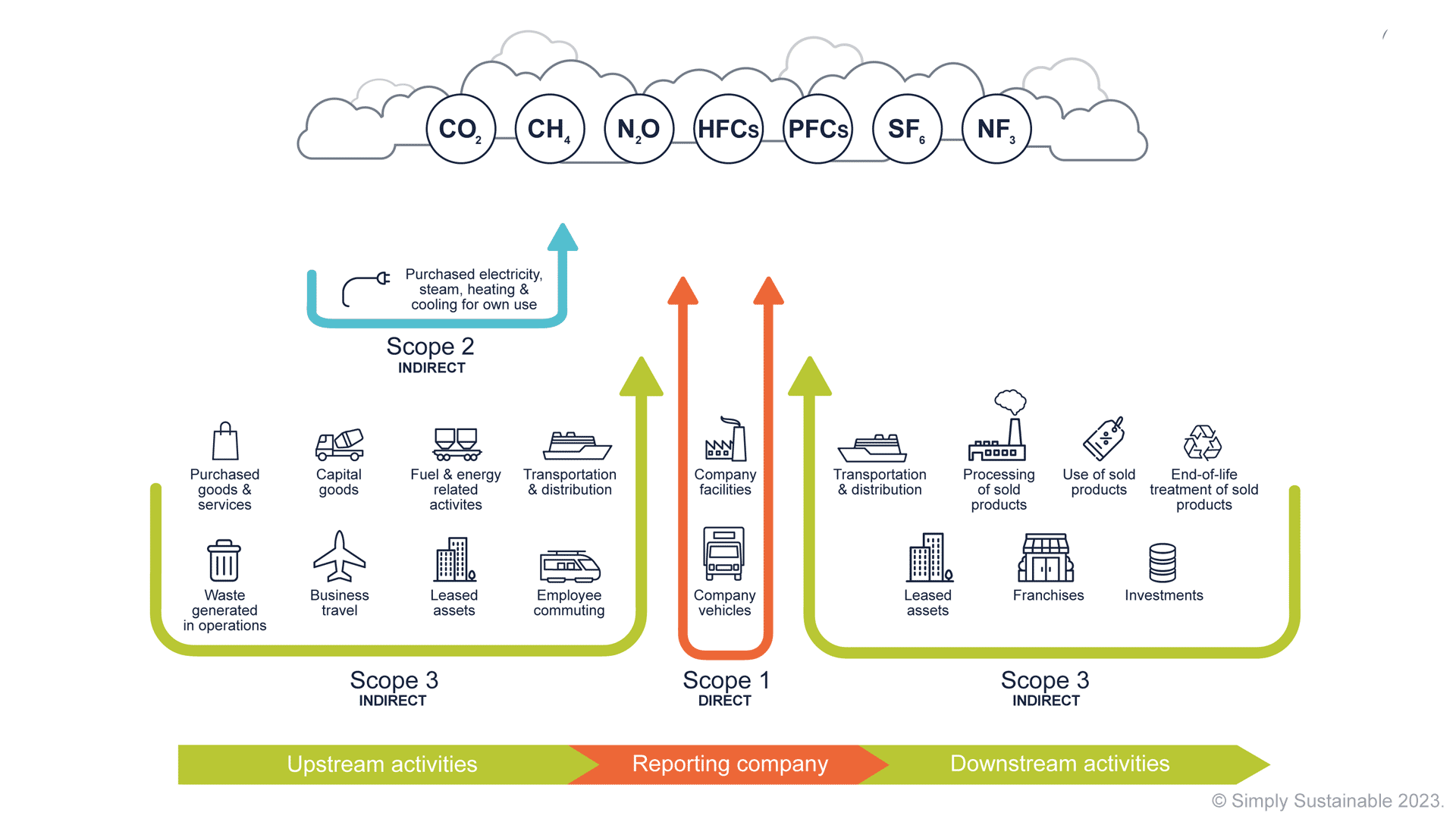
4 steps to setting your net-zero target
It is vital to understand where you are setting off from, before embarking on your net-zero journey.
Like all targets, net-zero targets point to where you need to get to, from your current baseline and by when. There are various ways of creating carbon reduction targets and it is good to see that we have finally moved on from picking nice-sounding round numbers that worked well together (e.g. 20% reduction by 2020 or 30% by 2030). Today, most targets are being set in-line with what the science is telling us is needed to avoid the worst effects of climate change. Targets in line with climate science, AKA science-based targets.
Before embarking on your net-zero journey, it is vital to consider why you are setting your target and how you want to communicate your goals. What is the scope of the target? Is it for one company, a group-wide target or country specific? This will impact the approach you need to take, particularly the first step in your net-zero journey; measuring your carbon footprint through carbon accounting.
Step 1: Understand your current emissions
Every company’s net-zero journey will be different, but they all start in the same place; understanding the baseline carbon footprint.
To establish a resilient and comprehensive net-zero target, it is important to ensure that you include all relevant emissions categories in your baseline carbon footprint. Whilst some net-zero frameworks, such as the Science Based Targets initiative (SBTi), don’t require 100% of your footprint to be covered in your target, it is important to begin with a full picture of your footprint and association carbon hotspots. For the purposes of SBTi, your baseline year must be no earlier than 2019 and ideally should be your most recent year.
Our advice would be to follow best practice emissions reporting standards (e.g. Greenhouse Gas Protocol Accounting, (a widely used set of guidelines for carbon accounting), and Reporting Standard [2004:2015], ISO 14064-1, SBTi Corporate Net-Zero Standard [2021]). This will not only ensure that you have a solid baseline but will also mean that you can use the data collected for other reporting requirements (such as SECR, TCFD and CSRD). Following best practice standards will also assure that you are audit ready, should someone come knocking!
All seven greenhouse gasses covered under the GHG Protocol should be included in your footprint and emissions from across the entire value chain should be incorporated. This includes emissions produced by a company’s own processes (Scope 1), purchased electricity and heat (Scope 2) and those by suppliers and end-users (Scope 3). For more information on emission scopes see the diagram below and this Simple Guide to Scope 3 Emissions by Sytze Dijkstra, Simply Sustainable’s Netherlands Country Manager.

Step 2: Hotspot analysis
Analysing the biggest areas of opportunity and risk in relation to decarbonisation.
Emissions hotspots are areas within your business operations and supply chain that have the greatest carbon impact, and as such, offer the greatest opportunity to drive reductions in your carbon footprint. Before setting carbon reduction or net-zero targets it is important to understand your hotspots and understand how these will be impacted by any areas of significant change or growth within your business.
Step 3: Internal buy-in
Getting buy-in at board level is key to the success of your net-zero strategy.
One common mistake is organisations signing-up to sustainability targets and commitments without fully understanding the implications on their business, or how to achieve their commitments. This does not mean that you need to know the exact actions you will be required to take to achieve net-zero, but it does mean that you need to understand the scale of the challenge ahead, before committing. This is not only important for gaining buy-in internally but can also carry a reputational risk. In the first five years after launching, SBTi expelled 119 companies from the initiative after failing to submit climate targets within two years of committing.
Getting buy-in at board level is key to the success of your net-zero strategy, this will not only help your board to increase its carbon literacy but will also help to drive action when it comes to the decarbonisation required to meet your net-zero commitment.
Step 4: Committing to your net-zero journey
Publicly committing to your net-zero journey will help keep momentum and drive action.
Publicly committing to set a net-zero target is not mandatory, but something that is encouraged by the SBTi. This can be done informally through your own internal and external communications, or more formally though submitting a commitment letter to SBTi. If going through the formal SBTi process, you have 24 months to submit your target after signing your commitment letter.
If you are interested in setting net-zero targets, but not sure where to start, please contact us.
Author: Henry Unwin, Head of Climate and Carbon Services
Next in the net-zero series
This is part 2 of a series of insights into net-zero. The next article in our series will cover how to calculate your net-zero target, how to ensure it’s in line with the science and making sure you are setting the right level of ambition, whilst ensuring your target is achievable.
The series is as follows:
- Part 1: What is net-zero and why is it important?
- Part 2: How to approach setting a net-zero target (baseline carbon footprinting and understanding)
- Part 3: Ensuring your target is robust, ambitious and in line with the science on climate change
- Part 4: Validating and communicating your net zero target (released Thursday 27th June)
